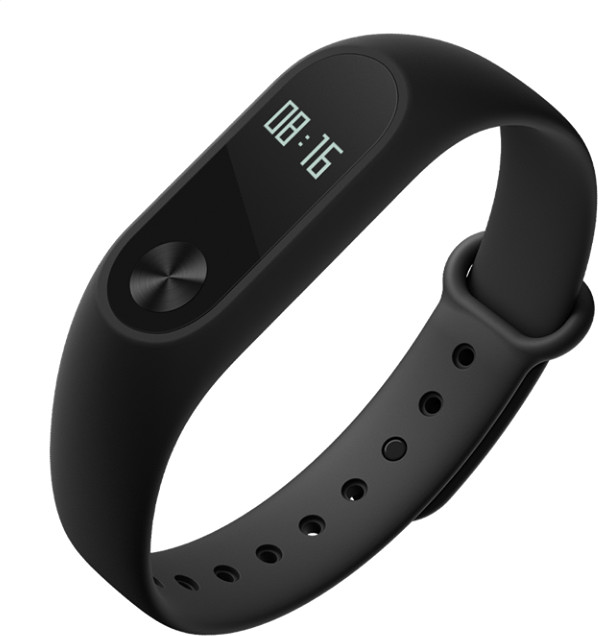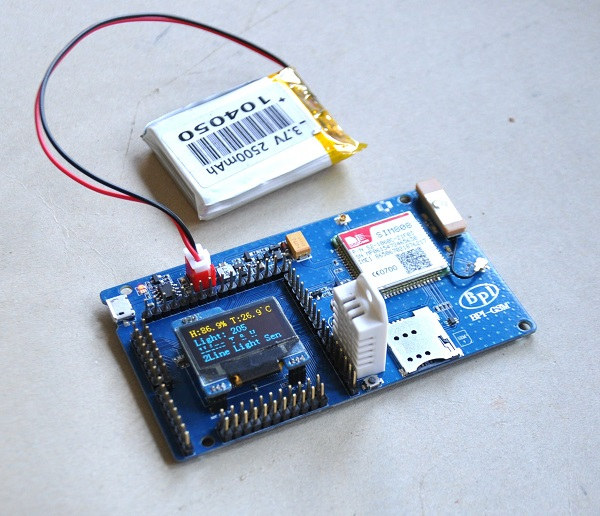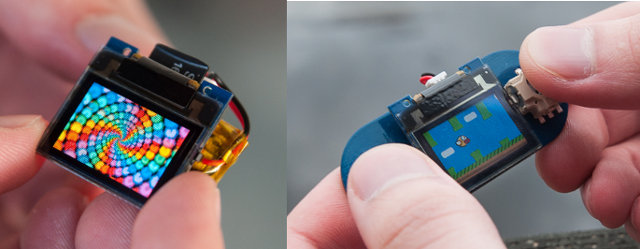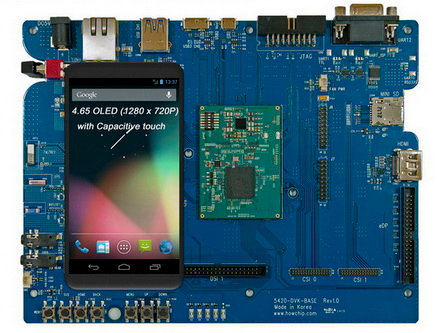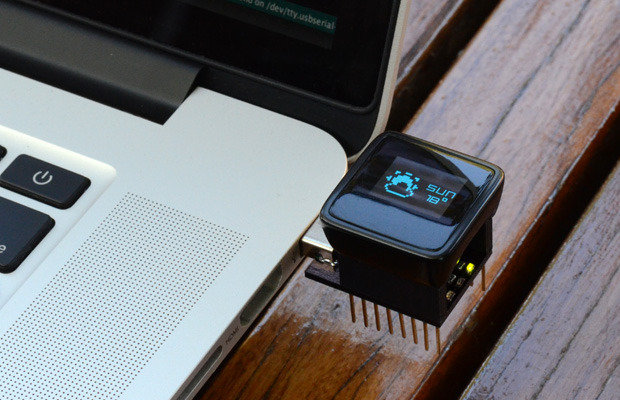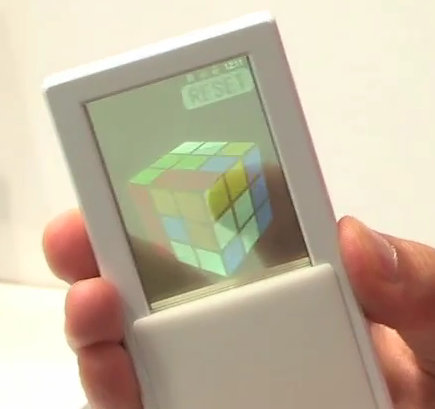I’m not a big fan of fitness trackers without display that require you to monitor your daily progress on your smartphone, and that’s probably why when Xiaomi released their first fitness band I was not quite as interested, but now the Chinese company has released Mi Band 2 with an OLED display, an heart rate monitor, IP67 ingress protection rating, and a 20-day of battery life for just 149 RMB ($23). Mi Band 2 key features: Fitness, heart rate and sleep tracker OLED display, view time, step count, heart rate 20-day battery, IP67 water resistant ADI accelerometer and optical heart rate sensor Anodized 0.05mm ultra-thin button Upgraded pedometer algorithm Hypoallergenic silicone band 2nd gen Bluetooth 4.0 for faster, stable connections It’s still good to be able to gather your fitness data over time, and you can do so with Mi Fit app for Android or iOS. The downside with an […]
BPI-GSM Arduino Compatible Board Integrates a GSM & GPS Module, Sensors and an OLED Display
Banana Pi team has come up with another board, but this time it does not run Linux or Android, as they’ve made an Arduino compatible board called BPI-GSM based on Atmel ATmega2560 MCU with a light sensor, DHT22 temperature and humidity sensor, and a GSM/GRPS & GPS module powered by a LiPo battery. BPI-GSM board specifications: MCU – Atmel ATmega2560 8-bit AVR MCU @ 16 MHz with 256 KB flash, 8KB SRAM, 4KB EEPROM Connectivity – Simcom SIM808 GSM, GPRS, and GPS module + SIM card slot + Sensors – DHT22 temperature and humidity sensor, light sensor Display – OLED display Expansion headers – 54x digital I/O (including 14x PWM), 16x analog input, 4x UART. Max DC current per I/O: 40 mA. Misc – Reset button, LEDs Power Supply 5V via micro USB port 3.7V LiPo battery (2,500 mAh battery included in kit) Dimensions – TBD The board can be […]
$25 TinyScreen is an OLED Display for TinyDuino Arduino Compatible Board (Crowdfunding)
Back in 2012, Tiny Circuits launched a Kickstarter campaign for TinyDuino, an Arduino compatible board that’s… tiny, based on Atmel Atmega328P, and supports tiny stackable shields in a similar fashion to Microduino (launched in 2013). The campaign was successful, and the company is now back on Kickstarter with TinyScreen, an OLED display that can be stacked on top of TinyDuino to create a smartwatch, a minuscule gamepad, smart glasses, and more. TinyScreen technical specifications: 96×64 OLED display, 16-bit color depth 0.96″ (24.4mm) viewable area Software controllable backlight (OLED brightness) Power down mode Four push buttons along the sides (connected to IO pins) SPI interface for display Power Supply – 3.0V to 5.5V operation (higher voltages supported with TinyShield power regulator) Power Consumption – 20 – 45mA max supply current (depending on brightness) Dimensions – 25.8mm x 25.0mm Programming of TinyDuino can be done through a web interface for Arduino called […]
WifiDuino Arduino Compatible Wi-Fi Board Features an Optional OLED Display (Crowdfunding)
Getting Wi-Fi with Arduino can be relatively expensive, and may take a little too much space. Spark Core board greatly addressed both price ($39) and form factor issue last, but there’s another option coming to market thanks to WifiDuino a $34 board with Wi-Fi, that’s tiny and Arduino compatible. An OLED display is also available as an option, at a lower price point than MicroView board, and including Wi-Fi or not, depending on the perk. WifiDuino hardware specifications: MCU – Atmel Atmega32U4 (same as Arduino Leonardo) Display – Optional 128×64 OLED display Connectivity – Optional Wi-Fi 802.11 b/g with STA, AP and ADHOC network modes Digital I/Os – 20 Analog I/Os – 12 Other I/Os – 7x PWM, UART, I2C, SPI Power – 5V Dimensions – Duino board only without Wi-Fi nor OLED: 25.6mm x 38.8mm x 11.0mm WifiDuino support the Arduino IDE, so you can write you sketch as […]
HOWCHIP 5420-DVK is a Mobile Development Kit with Samsung Exynos 5420 SoC, an OLED Display
With Arndale Octa already shipping, and the upcoming ODROID-XU2, we already have two low cost boards with Samsung Exynos 5420 big.LITTLE processor for less than $200. But if you want a more complete kit, HOWCHIP 5420-DVK with a 4.65″ OLED display and capacitive touchscreen, 2GB RAM, 4GB eMMC, and various connectors, could be an option. There’s also a Lite version without the OLED display. The board is composed of a CPU module, a baseboard, and a phone like display. Here are the specifications: SoC – Samsung Exynos 5420 Octa with 4x ARM Cortex A15, and 4x ARM Cortex A7 in big.LITTLE configuration, with Mali-T628 GPU. System Memory – 2GB LPDDR3 (POP with CPU) Storage – 4GB eMMC 4GB on board, SD card Slot Video Output HDMI type A connector MIPI DSI header up to 1980×1080 eDP (Embedded Display Port) header up to 2560×1600 Display – 4.65″ OLED (1280×720) with touch […]
MicroView is a Tiny Arduino Compatible Board with an OLED Display (Crowdfunding)
Last year, we’ve been presented with many small Arduino compatible boards such as MicroDuino, RFDuino, BLEDuino, Spark Core, Olimexino-Nano and more… All these boards have been own strength and connectivity options, but if you want to see what going on in your board, you’d either need to connect it to your computer, or connect some LEDs or an external display. Geek Ammo’s MicroView fixes that by providing an Arduino compatible board nicely combined with a built-in OLED display. This allows you to display stats, weather, play games, create wearable projects (watch, necklace), and all sort of other projects that may require a small display. MicroView specifications: MCU – Atmel ATmega328P @ 16 MHz with 32KB flash, 2 KB SRAM, and 1KB EEPROM Display – 64×48 OLED Display Digital I/O – 12 (of which 3 provide PWM output) Analog Input – 6 Operating Voltage: 5V Input Voltage: 3.3VDC to 16VDC, no […]
NTT Docomo Showcases Smartphone Prototype with See-through Touch Panel
NTT Docomo and Fujitsus have jointly developed a smartphone prototype with a 2.4″ see-through OLED display (QVGA) that has touch sensors both on its front and back sides and NTT Docomo is currently exhibiting the device and showcasing the corresponding new innovative user interface at Wireless Japan 2012, until June 1, 2012, in Tokyo. The backside touch panel can be operated by using the forefinger and there are several ways to take advantage of a see-through display in the UI including: Operate the notification bar from the back side of the panel with a finger Hold an icon with a finger of one hand from the back side of the panel and stroke the front side of the panel with a forefinger of the other hand to move the home screen on which the icon is placed Play Rubik’s Cube by spinning the cube when the back side is not […]
Samsung Super Amoled Plus Displays
Samsung further improved their Super AMOLED technology and designed “Super AMOLED Plus” screens with the following characteristics: Easier Reading: Improved screen image (50% more sub-pixels (8 to 12)) Save Power Consumption: Real Black (i.e no energy is used to display black) Slimmer: Reduced panel depth by 14% This new technology will improve contrast and outdoor visibility. Samsung will release 2 smartphones (Samsung Infuse 4G – i997) using that technology later this year (Q2 2011) with 4.3″ and 4.5″ screens, using 1.2 GHz single core hummingbird processor and running Android 2.3 (gingerbread). Jean-Luc Aufranc (CNXSoft)Jean-Luc started CNX Software in 2010 as a part-time endeavor, before quitting his job as a software engineering manager, and starting to write daily news, and reviews full time later in 2011. www.cnx-software.com


